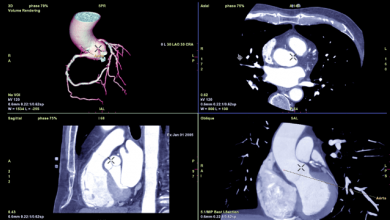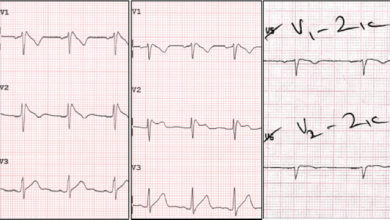Search results
Author(s):
Raluca Dulgheru
,
Sara Hana Weisz
,
Julien Magne
,
et al
Added:
3 years ago
Aortic stenosis (AS) is the most frequent valvular heart disease in developed countries,1 with a steady increase in prevalence as the population ages. Progressive degeneration of aortic leaflets,2 age-related and enhanced by common cardiovascular risk factors,3 is the most frequent aetiology. Besides ‘calcific’ AS (the valvular disease of the elderly), the second most frequent aetiology is…
View more
Author(s):
Jaskanwal D Sara
,
Takumi Toya
,
Riad Taher
,
et al
Added:
3 years ago
Heart failure (HF) affects more than 6 million people in the US and results in more than 1 million hospitalisations per year.1 In patients aged ≥65 years, there are more hospitalisations for a primary diagnosis of HF than any other condition.2 HF is a debilitating illness, associated with significant morbidity and mortality, rehospitalisation and societal costs.3 Current guidelines and position…
View more
Author(s):
Sofie Moreels
,
Steven Dymarkowski
,
Serge De Ridder
Added:
3 years ago
A 65-year-old male patient was referred to our outpatient clinic for cardiac evaluation because of an asymptomatic continuous murmur. Four years ago, a grade 2/6 systolic cardiac murmur had been coincidentally detected, but it had not been investigated so far. The patient was completely asymptomatic. There was no relevant past medical history or significant family history. His cardiovascular risk…
View more
Author(s):
Joanne D Schuijf
,
Jeroen J Bax
,
Ernst E van der Wall
Added:
3 years ago
Diabetes is an important risk factor for coronary artery disease (CAD) as reflected by the four-fold greater incidence of CAD in diabetic patients compared with the general population.1 Cardiovascular death is the most common cause of mortality in the type 2 diabetic population and, once diagnosed with CAD, patients with diabetes have a considerably poorer prognosis than their non-diabetic…
View more
Author(s):
Teresa Sevilla
,
Ana Revilla-Orodea
,
J Alberto San Román
Added:
2 years ago
Author(s):
Dimitrios Bliagos
,
Ajay J Kirtane
,
Jeffrey W Moses
Added:
3 years ago
Worldwide, it is estimated that the total number of people with diabetes will increase from 171 million in 2000 to 366 million in 2030.1 In the US, a total of 23.6 million people have diabetes, representing 7.8% of the population, and the prevalence of diabetes is on the rise, due to an increasingly sedentary lifestyle, increasing obesity and an ageing population. These statistics do not account…
View more
Author(s):
Marko Banovic
Added:
2 years ago
In this short video interview, Dr Marko Banovic (Clinical centre of Serbia, Belgrade, RS) discusses the AVATAR Trial. The trial evaluated aortic valve replacement (AVR) compared with conservative therapy among patients with asymptomatic severe aortic stenosis.
Presented first at AHA 2021, the trial showed that early AVR was beneficial at preventing adverse events among patients with asymptomatic…
View more
Author(s):
Afik D Snir
,
Hariharan Raju
Added:
3 years ago
Brugada syndrome was first described in 1993 in a case series of eight patients with recurrent polymorphic ventricular tachycardia (VT) and stereotypical electrographic characteristics in the context of a structurally normal heart.1 Since then, the syndrome has been extensively studied and recognised worldwide as a major cause of sudden cardiac death (SCD) in otherwise healthy patients.2 Recent…
View more
Author(s):
Béatrice Brembilla-Perrot
Added:
3 years ago
Wolff-Parkinson-White (WPW) syndrome is associated with atrioventricular re-entrant tachycardia, but a patient showing a pre-excitation syndrome on electrocardiogram (ECG) may remain asymptomatic. The main problem is that some of these asymptomatic patients or patients with re-entrant tachycardia are at risk of sudden death.1 The studies of patients with aborted sudden death indicated that in…
View more
Author(s):
Muriel Sprynger
Added:
3 years ago
Abstract
Several imaging techniques (such as ultrasounds, computed tomography [CT] scan, magnetic resonance imaging [MRI], positron emission tomography [PET] scan, etc.) can provide interesting information on subclinical atherosclerosis and plaque stability. In fact sonographic imaging techniques can be very useful in this field. All of them have their limitations, but each of them has its own…
View more














